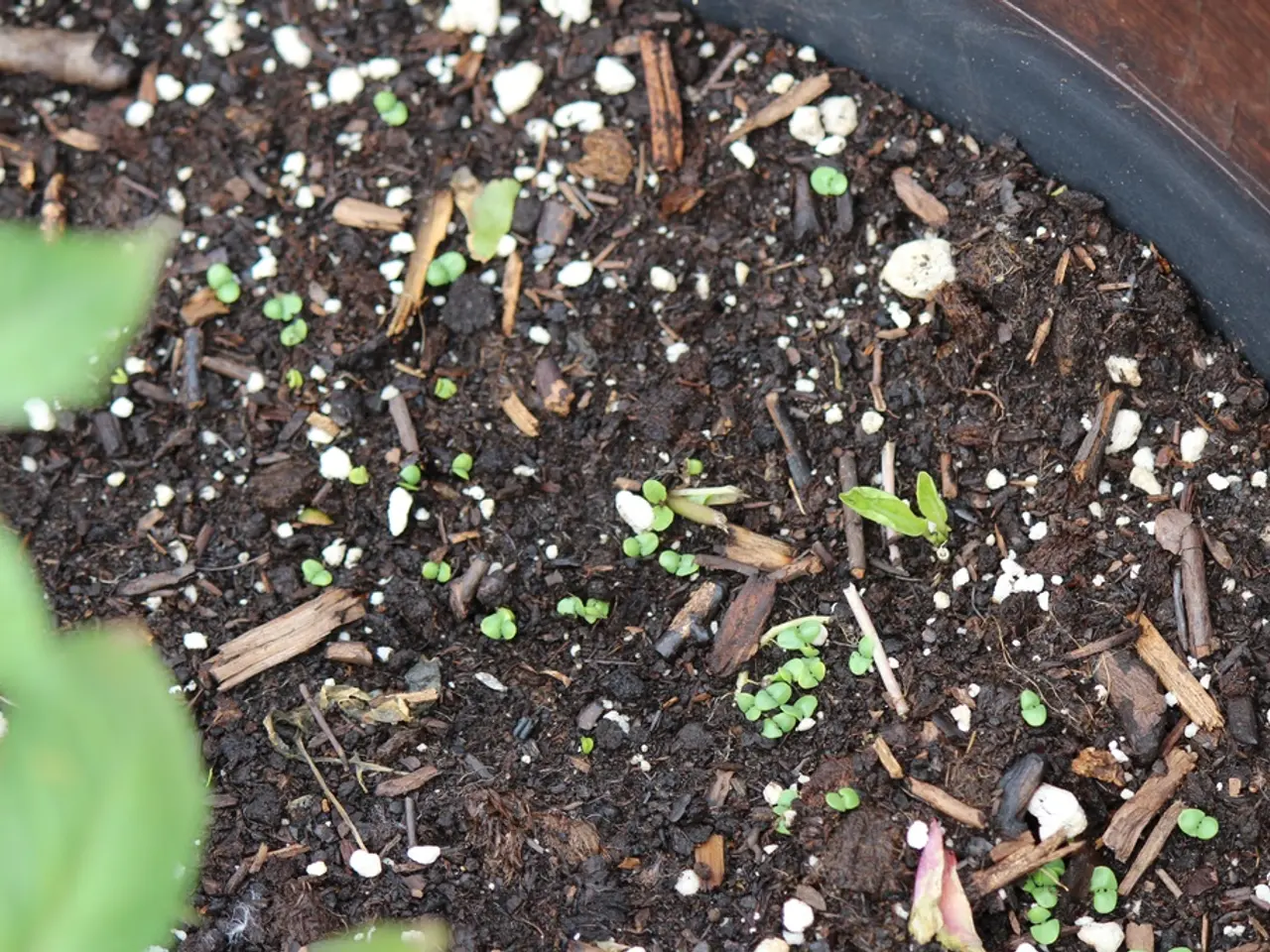Exploring Soil Preparation for Sowing: Understanding the What, Why, and Techniques?
In the world of gardening and farming, the foundation of a thriving crop or beautiful garden begins with the soil. Here are some key factors to consider when preparing your soil for planting.
Choosing the Right Plants for Your Soil Texture
The texture of your soil plays a significant role in determining which plants will thrive. Root vegetables like carrots and parsnips grow well in sandy soils, while nutrient-hungry plants like brassicas prefer soils with more clay. To determine the texture of your soil, you can use a flowchart or guide.
Testing Soil pH for Plant Health
Testing the pH level of your soil is crucial for plant health as it affects their ability to absorb nutrients. You can send a soil sample to your local county extension office or use a home testing kit to measure the pH level, which ranges from 0 to 14, with 7 being neutral. Most plants thrive in soils with a pH level between 6 and 7. If your soil is too acidic (pH below 7), you can add lime or calcium carbonate to raise the pH. If it's too alkaline (pH above 7), you can add sulfur or calcium sulfate to lower the pH.
Enhancing Soil Health with Organic Matter
Organic matter such as farmyard manure or compost can be added to soil to create a more open structure, help retain water and nutrients, and improve soil health. When adding organic matter, it's important to consider the quality of the amendment, ensuring it is well-mixed, easy to spread, does not injure plants, and decomposes slowly.
Controlling Weeds Before Soil Preparation
Effective methods to remove weeds from planting areas before soil preparation include herbicide application, physical mulching and covering, landscape fabric, mechanical weed control, and integrated weed management (IWM).
- Herbicide Application: Use preplant or burndown herbicides a few weeks before planting to kill emerged weeds and provide residual control against new ones. In no-till systems, apply burndown herbicides with foliar activity to control existing weeds, possibly combined with residual herbicides to extend control duration.
- Physical Mulching and Covering: Spread organic mulches, such as straw or specialized hay, several inches thick to suppress weed growth by blocking sunlight. Use cardboard or newspaper layers wetted and covered with mulch as a simple, eco-friendly barrier to smother existing weeds and prevent new ones by blocking light.
- Landscape Fabric: Place breathable landscape fabric over the soil to block light from reaching weed seeds while allowing air and water to nourish desired plants. Combining fabric with mulch enhances weed suppression.
- Mechanical Weed Control: Preplant incorporation of weeds by tillage or cultivation can physically remove or bury weeds before planting. Preplant incorporated (PPI) herbicides can complement this by controlling susceptible weeds after soil incorporation.
- Integrated Weed Management (IWM): Combining multiple weed control strategies such as herbicides, mechanical methods, mulching, and cultural practices to reduce weed pressure effectively and sustainably. IWM helps avoid resistance developing from overuse of herbicides alone.
Additional Approaches to Weed Control
Creating defined edges around planting areas can reduce weed seed influx, and careful selection of mulch materials can avoid introducing new weed seeds.
Adding Organic Matter to Soil
Organic matter can be added to soil by digging or rototilling it in, planting a green manure cover crop, or applying a layer on the soil surface and planting into it.
By following these tips, you can ensure better conditions for crop or garden plant growth and create a thriving garden or farm.
Maintaining a healthy lifestyle that includes gardening can significantly improve your home-and-garden spaces by enhancing soil health. To achieve this, consider adding organic matter like farmyard manure or compost to your soil to improve its structure, water retention, and nutrient content.
When choosing plants for your soil, it's essential to consider the soil texture. For instance, root vegetables like carrots and parsnips grow well in sandy soils, while nutrient-hungry plants like brassicas prefer soils with more clay.




